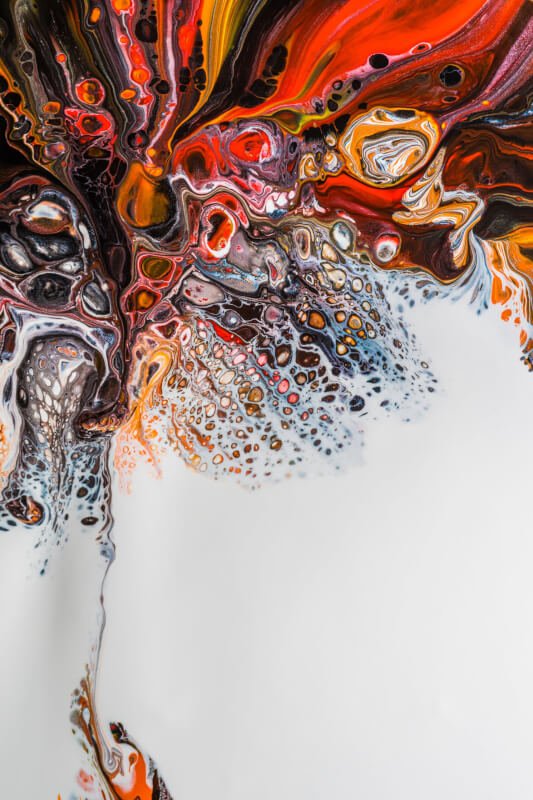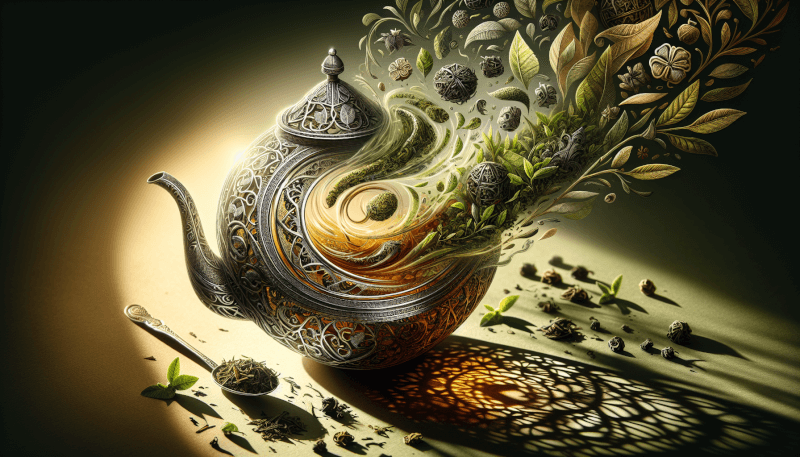Have you ever wondered how to create the perfect blend of teas when brewing? Well, look no further, because in this article, you will discover the art of blending different teas to enhance your tea-drinking experience. Whether you want to add depth of flavor, combine different health benefits, or simply explore new taste combinations, blending different teas can be a delightful journey of experimentation. So get ready to elevate your tea brewing to a whole new level as you unlock the secrets of the art of blending different teas.
The Art of Blending Different Teas when Brewing

Understanding Tea Blending
Tea blending is a delicate and intricate art that involves combining different types of teas to create unique and flavorful blends. It is a process that requires careful consideration of the characteristics of each tea and how they will complement and enhance each other when brewed together. By blending teas, you can create a beverage that is both harmonious and complex, appealing to a wide range of taste preferences.
Knowing the Different Types of Teas
Before you can start blending different teas, it is important to have a good understanding of the various types of teas available. There are six main categories of tea – white, green, yellow, oolong, black, and pu-erh. Each type of tea has its own distinct flavor profile and brewing characteristics. White teas are delicate and subtle, while green teas have a fresh and grassy taste. Yellow teas are mellow and sweet, oolong teas range from light and floral to dark and roasted, black teas have a robust and full-bodied flavor, and pu-erh teas are earthy and aged.
Factors to Consider when Blending Teas
When blending teas, there are several factors to consider to ensure a successful and harmonious blend. Firstly, consider the flavor profile of each tea and how they will complement each other. Think about the intensity and strength of each tea – a strong black tea might overpower a delicate white tea if not balanced properly. Additionally, consider the brewing characteristics of each tea, such as steeping time and temperature, to ensure that all the teas in the blend can be brewed together effectively. Lastly, consider any additional ingredients or flavors you may want to add to the blend, such as spices or dried fruits, to further enhance the taste and aroma.
Balancing the Flavors
One of the key aspects of blending different teas is to achieve a balanced flavor profile. This means ensuring that no single tea dominates the blend, but rather all the flavors harmonize together in a pleasing and well-rounded way. To achieve this, start by experimenting with different ratios of each tea until you find the perfect balance. Consider the aroma, taste, and mouthfeel of the blend – does it have a good balance of sweetness, bitterness, and astringency? Adjust the proportions of each tea accordingly until you achieve the desired flavor balance.

Experimenting with Complementary Teas
When blending different teas, it is often helpful to consider the concept of complementary flavors. Just as certain foods and spices pair well together, certain teas can also complement each other when brewed together. For example, a floral green tea may pair well with a fruity oolong tea, as the floral notes of the green tea can enhance and bring out the fruity flavors of the oolong. Similarly, a smoky black tea may complement a roasted oolong, as the smokiness can add depth and complexity to the blend. Don’t be afraid to experiment with different combinations to discover unique and delightful flavor profiles.
Creating Harmonious Flavor Profiles
Blending teas is all about creating harmonious flavor profiles that appeal to your personal taste preferences. To achieve this, it is important to understand the individual characteristics of each tea and how they will contribute to the overall flavor profile of the blend. Consider the aroma, taste, and mouthfeel of each tea, as well as any additional ingredients or flavors you may be using. Aim for a blend that is well-balanced, with a pleasant combination of flavors that work together seamlessly. Remember, the art of tea blending is subjective, so don’t be afraid to trust your own palate and intuition when creating your own unique blends.

Layering the Teas for Complexity
To add depth and complexity to your tea blends, consider layering the teas. This involves blending teas with different flavor profiles and characteristics to create a multi-dimensional taste experience. Start with a base tea that provides a solid foundation for the blend. This could be a milder tea like white or green. Then, layer on additional teas that have distinct or contrasting flavors, such as a stronger black tea or a fragrant oolong. By doing this, you can achieve a blend that unfolds in layers, with each sip revealing new and intriguing flavors.
Blending for Different Brewing Methods
Different brewing methods can also influence the taste and characteristics of a tea blend. Consider how the blend will be brewed – will it be prepared in a teapot, a gaiwan, or a traditional infusion vessel like a Yixing clay pot? The brewing vessel and method can impact the extraction of flavors, the strength of the brew, and the overall experience of drinking the tea. Experiment with different brewing methods to find the one that best showcases the flavors and aromas of your blend.

Considering Health Benefits
In addition to creating delicious and flavorful blends, you can also consider the health benefits of the teas you are blending. Different teas have different medicinal properties and health-promoting compounds. For example, green tea is known for its antioxidant properties, black tea can boost heart health, and oolong tea has been linked to improved digestion. By blending teas with complementary health benefits, you can create a blend that not only tastes good but also supports your overall well-being.
Storing Blended Teas
Once you have created a beautiful tea blend, it is important to store it properly to maintain its flavor and freshness. Tea blends should be stored in airtight containers, away from light, heat, and strong odors. This will help preserve the delicate flavors and aromas of the teas. Consider using opaque jars or tins to further protect the blend from light exposure. It is also a good idea to label the container with the name and ingredients of the blend, as well as the date it was created, to keep track of freshness and avoid confusion. With proper storage, your tea blend can be enjoyed for months to come.
In conclusion, the art of blending different teas when brewing is a fascinating and rewarding endeavor. By understanding the characteristics of each tea, experimenting with complementary flavors, and considering factors such as flavor balance, brewing methods, and health benefits, you can create unique and harmonious blends that cater to your personal taste preferences. Whether you are an avid tea connoisseur or just starting your tea blending journey, don’t be afraid to let your creativity soar and explore the endless possibilities that tea blending has to offer. Cheers to the art of tea blending!



